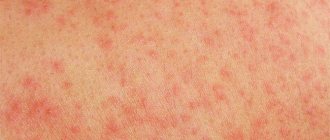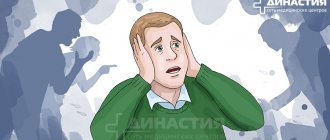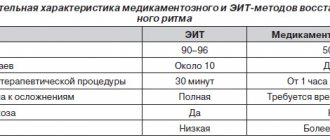Obsessive-compulsive disorder is a neurosis of obsessive states. It is based on thoughts and actions that appear against the will of a person. Often far-fetched ideas are absurd and strange, but the patient cannot get rid of them.
If you are faced with symptoms of obsessive neurosis, seek help from the specialists of the Leto mental health center. They will offer you an effective treatment program that will help you leave obsessive actions and thoughts in the past forever. To make an appointment, call .
Where does compulsive-obsessive neurosis come from?
According to modern theory, obsessive-compulsive disorder is the result of a disorder in the metabolism of serotonin and norepinephrine. When there is a disruption in the production and distribution of these neurotransmitters, thought processes change and anxiety levels increase.
The disturbed metabolic reactions themselves are often the result of acquired or hereditary factors. In the first case, we mean trigger provocateurs of obsessive neurosis, which destabilize the central nervous system. It can be:
- frequent stress;
- traumatic brain injuries;
- past infectious diseases;
- somatic pathologies.
In the second case, we are talking about inherited genomic abnormalities, due to which the normal synthesis of compounds that form the neurotransmitter system becomes impossible.
We can conclude that obsessive neurosis is a multifactorial disease. It manifests negative inherited traits that have been reinforced by unwanted external triggers. The risk group for developing the disease includes suspicious people. They constantly worry about what others will think of them and have inappropriately low or high self-esteem.
Tests and diagnostics
Obsessive movement neurosis is diagnosed based on complaints from the patient or relatives, his behavior and the results of consultation with a neurologist and psychiatrist. It is also advisable to consult a psychotherapist.
It is important to conduct an objective study to determine whether changes are developing in the patient's psychological state.
The doctor may order the following tests to rule out certain pathologies:
- EEG.
- Magnetic resonance imaging.
- CT scan.
It is also necessary to conduct a general blood and urine test to exclude pathological processes in the body. If necessary, other studies are prescribed to determine the deficiency of vitamins and minerals, which can lead to dysfunction of the nervous system.
If alarming symptoms appear in a child, it is recommended to visit a pediatric neurologist with him. He needs to tell about all the stress the baby has experienced, as well as what medications the child has taken recently.
Since there is currently no single standard for assessing obsessive movement neurosis, the doctor will base his conclusions on the research results obtained, as well as on the stories of parents and his own observations.
Typical symptoms of the disease
The main manifestation of obsessive-phobic neurosis is obsessions. By this term, doctors mean obsessions, doubts, fears, memories, experiences. The patient cannot forget about them, which negatively affects his quality of life.
At the same time, he is critical of himself and understands that he is behaving strangely. Makes attempts to forget about the obsessive thought, but cannot change anything.
Very often, obsessions are accompanied by compulsions. These are movements with which the patient tries to relieve nervous tension. Rocking from side to side, picking off nails, pulling out hair, stepping over road markings, and all kinds of ritual movements are all examples of compulsions.
With obsessive neurosis, the patient becomes slow and inhibited. Overwhelming reckless ideas prevent him from focusing on important things. The disorder can occur in different ways, starting with barely noticeable symptoms and reaching disability and partial loss of ability to work.
If the neurosis is mild, the patient’s friends may not even realize that something is wrong with him. They perceive strange movements and phrases as character traits or banal jokes.
In severe cases, neurotics often refuse to leave the house if they are afraid of dirty air. They cannot handle any objects because they are afraid of germs. Everywhere they see danger. Patients evaluate fictitious ideas as real. It is impossible to convince them otherwise without medical help.
Classification
Experts divide the symptoms of this disease into three types:
- Classic tics are jerky and rapid movements of the head, arm or neck. Their manifestation may be preceded by skin itching. Tics can also be audible. The person constantly clears his throat, snorts or hums.
- Stereotypes – This could be tapping the table with your fingers, rocking to the side, twitching your limbs, or other stereotypical movements. However, there are no warning signs of the onset of such an attack.
- Disorders associated with harm to the body - hair plucking, nail biting, etc.
According to the characteristics of the manifestations, the following stand out:
- Single - the intensity level of such manifestations is the same over a long time, or they gradually fade over time.
- Remitting – symptoms either worsen or fade
- Progressive – symptoms get worse over time.
Survey
If obsessive-compulsive neurosis is suspected, the doctor conducts an examination, survey, and psychological testing. If a psychosomatic disease is detected, the patient is referred for consultation to specialized specialists (hepatologist, gastroenterologist, otolaryngologist, cardiologist, etc.).
The presence of a disorder is indicated by regularly occurring obsessions lasting at least one hour a day. They change a person’s life, make it incomplete, interfere with their ability to perform work duties and study.
Among the diagnostic criteria of the disease:
- increased sweating;
- hand tremors;
- nervous tic;
- involuntary twitching of facial muscles;
- increased tendon reflexes.
If there is a suspicion of organic brain pathology, an MRI or CT scan is performed.
Causes
Obsessive movement syndrome in adults and children can manifest itself under the influence of the following reasons:
- Hereditary tendency - approximately 50% of such patients had relatives with a similar disorder. With a genetic predisposition, such manifestations can be observed not only in children, but also at an older age - in adults.
- Organic changes in the brain.
- Disruption of the chemical balance in brain cells.
- Lack of serotonin .
- Impaired electrical conductivity
- Acute or chronic psychotrauma.
Moreover, such manifestations as a consequence of stress are observed only in those people who have a biologically determined tendency to develop them.
Treatment of obsessive-compulsive disorder neurosis
Therapy will be successful only if the principles of an integrated and individual approach are followed. It makes sense to combine psychotherapy sessions with medication correction and hypnosis.
The following help to cope with obsessions on a physiological level:
- antidepressants;
- tranquilizers;
- psychotropic;
- sleeping pills;
- sedatives.
They are taken in short courses and only if the disease is advanced.
Among psychotherapeutic techniques, cognitive behavioral therapy allows you to get positive dynamics. Within its framework, the psychotherapist first determines what phobias the client has, and then gives instructions to overcome them.
During the course, the patient comes face to face with his fears. The technique when a person is forced to experience a traumatic situation for him is called exposure. For example, if he is afraid of germs, then he is told not to wash his hands or shower for a while to make sure that nothing bad will happen.
The technique of stopping thoughts has proven itself well. It includes five basic stages:
- 1 - compiling a list of obsessive ideas;
- 2 - teaching the patient the skill of switching attention when any obsession appears;
- 3 - learning to say the command “stop” out loud (this will allow you to quickly block obsessive ideas in the future);
- 4 - learning to pronounce the command “stop” mentally;
- 5 - mastering the skill of finding positive aspects in emerging osbessias (if the patient is afraid to swim for fear of drowning, he is taught to imagine a life jacket floating nearby, etc.).
Also, in the treatment of obsessive-phonic neurosis, autogenic training, relaxation techniques, hypnotherapy, art therapy, and gaming techniques are used.
Stages of OCD
Unlike many other mental disorders and neuroses, the stages of obsessive-compulsive disorder relate more to the level of perception of them by the patient, rather than to the aggravation of symptoms. Thus, almost everyone suffering from OCD goes through three conditional stages:
- Misunderstanding . A state of generally not understanding what is happening. A person begins, out of nowhere, to be disturbed by strange thoughts, and sometimes previously unusual actions spontaneously appear. Of course, all this is extremely frightening and provokes the highest level of anxiety, especially since most likely the person knows nothing about this disorder, and certainly does not allow the possibility of its development in himself.
- Understanding without awareness . OCD is considered an independent unified diagnosis, which is disclosed to the patient. So, a person knows for sure that he has developed this form of neurosis, but he categorically refuses to believe in it, believing that everything will go away by itself, this is how the work of compensatory mechanisms manifests itself. Next, a person often enters into a struggle with his obsessions, to win, which is quite difficult alone; at this stage, it is very important not to lose faith in oneself and to seek help in time. tries to resist his strange
- Adoption . The key period of the disease is when the patient realizes that he has abnormalities and acknowledges their presence, understanding that obsessions are a symptom of a disorder in the functioning of the brain, which needs to be treated using the method of deeper awareness and elaboration.
Of great importance in the treatment of OCD for the patient himself is his possession of information about the pathogenesis, etiology and trigger mechanisms of action of this type of neurosis. The ability and ability to apply self-help methods in the presence of this disorder play a big role, giving a person the opportunity to understand the essence of their fears, and therefore, take control of them and become able to manage their condition.
Cost of services
| CONSULTATIONS OF SPECIALISTS | |
| Initial consultation with a psychiatrist (60 min.) | 6,000 rub. |
| Repeated consultation | 5,000 rub. |
| Consultation with a psychiatrist-narcologist (60 min.) | 5,000 rub. |
| Consultation with a psychologist | 3,500 rub. |
| Consultation with Gromova E.V. (50 minutes) | 12,000 rub. |
| PSYCHOTHERAPY | |
| Psychotherapy (session) | 7,000 rub. |
| Psychotherapy (5 sessions) | 30,000 rub. |
| Psychotherapy (10 sessions) | 60,000 rub. |
| Group psychotherapy (3-7 people) | 3,500 rub. |
| Psychotherapy session with E.V. Gromova (50 minutes) | 12,000 rub. |
This list does not contain all prices for services provided by our clinic. The full price list can be found on the “Prices” , or by calling: 8(969)060-93-93. Initial consultation is FREE!
Preventing the return of the disease
It is almost impossible to completely recover from obsessive neurosis, but you can make it mildly expressed - invisible to others and not interfering with the patient’s ability to lead a normal lifestyle. Adequate psychotherapy and competent medication support reduce the symptoms of the disorder.
In some periods, for example, after overwork or stress, the disease may worsen again. But its symptoms will already be smoothed out, and the person will know how to “suppress” them completely.
Remember: if you start treatment for a mental disorder in its early stages, it will not go very far. This means you can live and work normally, and be a happy family man. If you start neurosis, it can even lead to disability. The choice is yours - fight for your health and find happiness or wilt under the pressure of reckless obsessions.
The specialists of the Leto clinic are ready to support you. If you want to be cured, be sure to call 8(969)060-93-93 . There are no hopeless situations. If it seems to you that you are in exactly this situation, it means that it was created by your wild imagination. We will demonstrate the brightness of the world around you and relieve you of annoying obsessions and compulsions.










